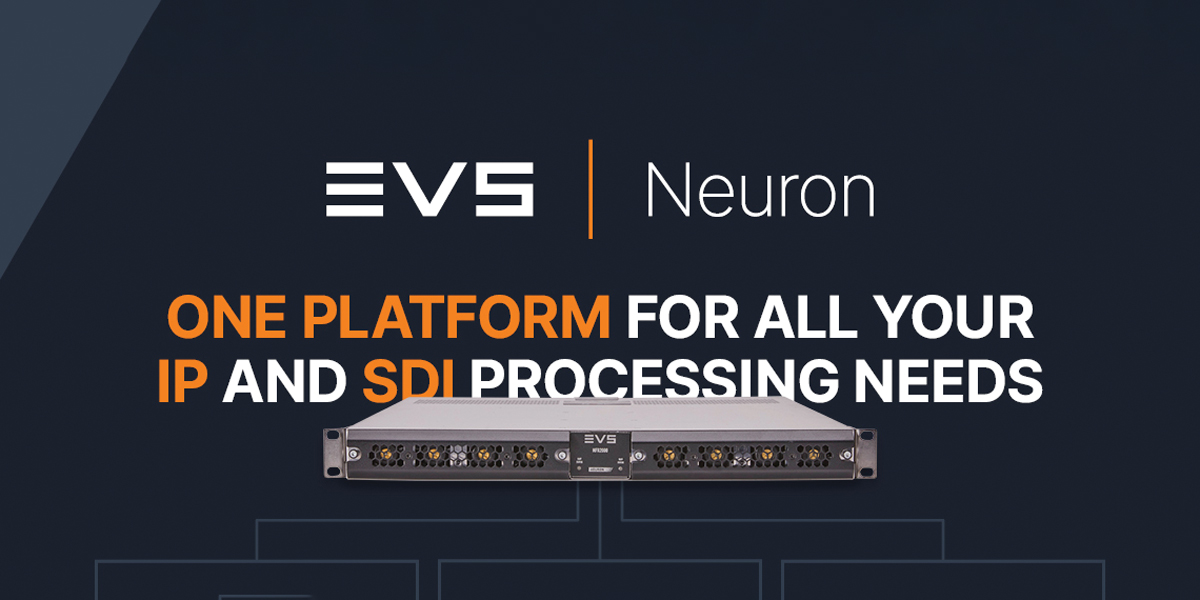Lowering costs, power and footprints

Posted on Jul 30, 2024 by FEED Staff
EVS Neuron acts as the ‘modular glue’ for all audio and video processing requirements in IP and SDI infrastructures
Sponsored editorial
In the quest to reduce the environmental impact, one area where our industry can make a significant difference is by focusing on reducing energy consumption. Media infrastructures are known to be power-hungry and account for a considerable portion of the energy footprint in live production.
For the team at EVS, one of its high-priority goals is assisting customers in navigating technology transitions with confidence, while also making their infrastructures significantly more energy efficient.
Shifting the narrative
“Ten years ago, the concerns surrounding power consumption were more focused on getting the heat out of the system than the cost involved, or saving the planet,” begins Peter Schut, SVP of media infrastructure at EVS.
“When we started to develop Neuron, it was not much different in that we were going to pack a lot of horsepower into a small chassis. So, after some work, we decided instead to go with a next-generation chip which was low power consumption to make sure it was easy to get the heat out.”
The Neuron Network Attached Processor (NAP) is a real-time audio-video processing platform that has become a critical component in production infrastructures, easing the move to IP and providing guaranteed bandwidth performance.
“We succeeded so well with Neuron that we are now seen as one of the lower-power-consuming processing pieces in the industry,” Schut adds. “A big UK racing car company recently moved away from our competitor to us, as they were looking for ways to better their carbon footprint, not only in cars but also broadcast equipment.
“The move from the competitor was due to a comparison we offered. The competitor was using $770,000 over ten years – the COTS-based system was $2.9 million – while Neuron was $330,000. That made the COTS system nine times more expensive. Suddenly, becoming carbon footprint efficient became way more appealing!”
Single but multifunctional
Each Neuron frame has the ability to accommodate two reprogrammable processing boards, whose functions are defined by the software.
“Neuron is extremely reliable,” Schut continues. “The processing we do is top-notch; it is a product where we made sure that if the requirements of the customer change, the Neuron product can grow with the customer.”
When uploading a different firmware file to a processing board, the abilities of each board can be modified, without the need to add or exchange any hardware.
“In other words, we only have one piece of hardware: Neuron, but we sell it doing 20 different things.”
Lowering consumption
For a high-availability product like Neuron, power consumption was a crucial design criteria. Thanks to its use of modern FPGA components and a highly sophisticated power-supply topology, Neuron is designed from the ground up as an energy-efficient platform, capable of processing up to 60% less power compared to similar products on the market.
The new Neuron View is even more energy-efficient, using close to 90% less electrical power than server-based applications and consuming approximately 40% less power than previous EVS SDI-based solutions in about one-sixth of the rack-unit space.
“The beauty is you can repurpose Neuron for something else, making it very effective and future-friendly,” Schut concludes.
This feature was first published in the Summer 2024 issue of FEED.









